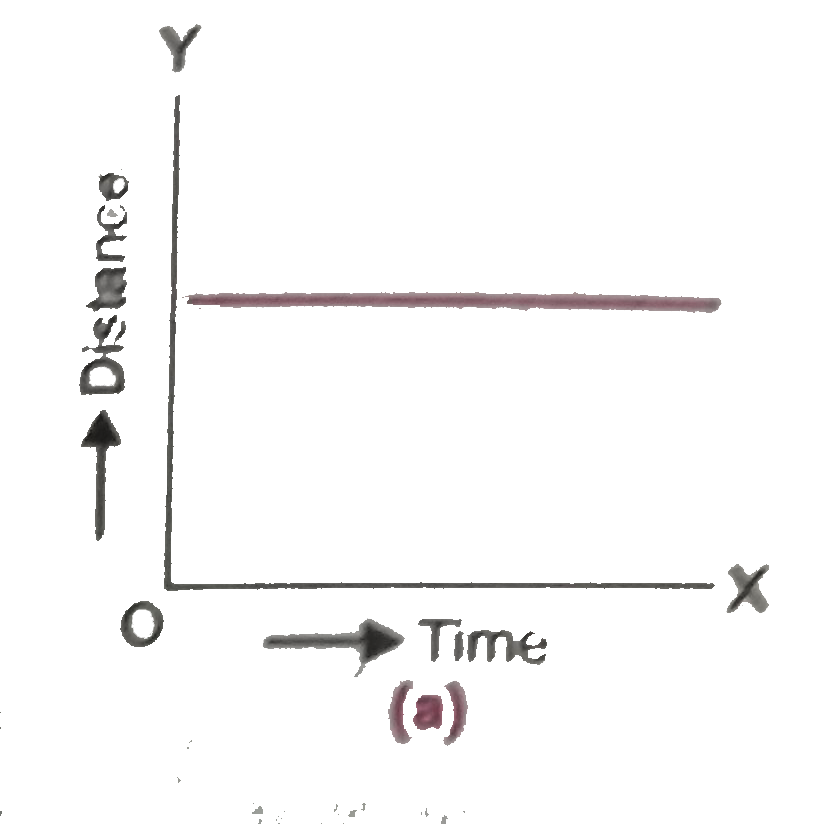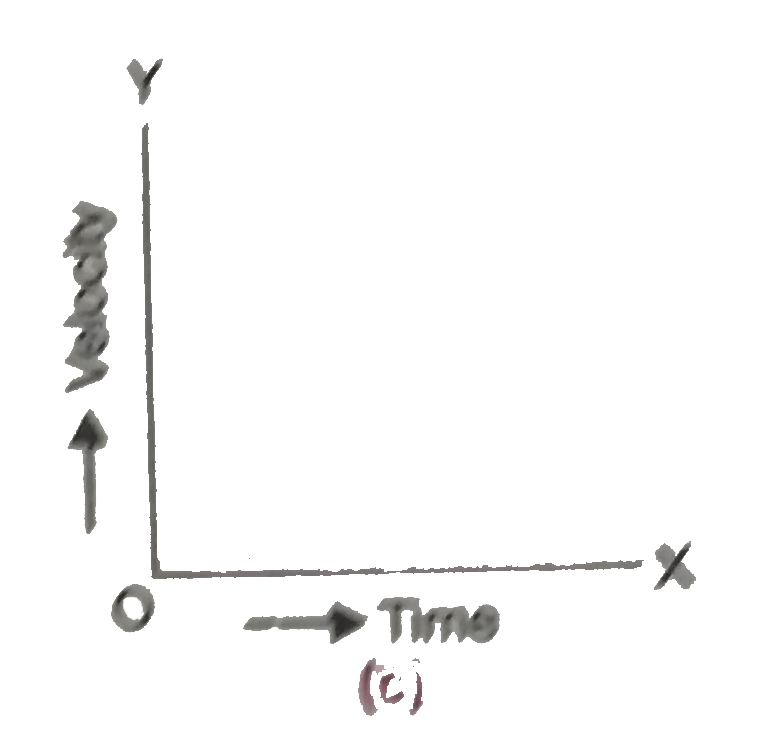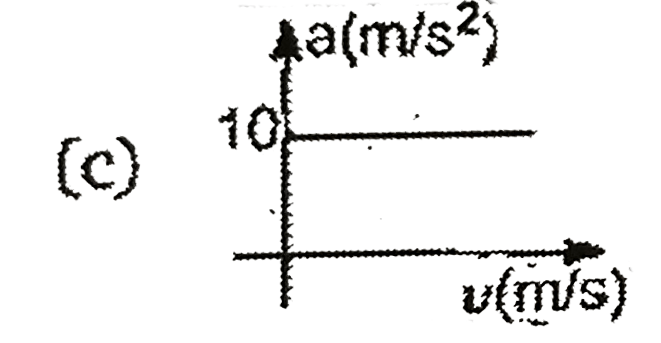Which of the four graphs (a), (b), (c) and (d) represents uniform motion?




The correct Answer is:C
To determine which of the four graphs (a), (b), (c), and (d) represents uniform motion, we need to understand the concept of uniform motion. Uniform motion occurs when an object moves with a constant velocity, which means that the acceleration is zero. Let's analyze each option step by step.
1. Understand Uniform Motion:
- Uniform motion means that an object is moving at a constant velocity.
- For an object to be in uniform motion, its acceleration must be zero.
2. Analyze Graph (a):
- In graph (a), if the body is at rest, it means that the position (x-coordinate) is not changing over time.
- Since the body is not moving, it cannot be considered as uniform motion.
3. Analyze Graph (b):
- In graph (b), the velocity is changing with time.
- If we express this mathematically, it can be represented as v=mt+c, where m indicates the slope (acceleration).
- Since there is a change in velocity, the acceleration is not zero, which means this graph does not represent uniform motion.
4. Analyze Graph (c):
- In graph (c), we have an x-t curve (position vs. time).
- The slope of this x-t curve represents the velocity. If the slope is constant, it indicates that the velocity is constant.
- Therefore, if the slope is constant, the object is in uniform motion.
5. Analyze Graph (d):
- In graph (d), we have a velocity-time curve where the slope is negative.
- This indicates that the velocity is decreasing over time, which means there is negative acceleration (retardation).
- Since the velocity is not constant, this graph does not represent uniform motion.
6. Conclusion:
- After analyzing all four graphs, we find that graph (c) is the only one that represents uniform motion, as it shows a constant velocity.
Final Answer:
The graph that represents uniform motion is Graph (c).
- Uniform motion means that an object is moving at a constant velocity.
- For an object to be in uniform motion, its acceleration must be zero.
- In graph (a), if the body is at rest, it means that the position (x-coordinate) is not changing over time.
- Since the body is not moving, it cannot be considered as uniform motion.
- In graph (b), the velocity is changing with time.
- If we express this mathematically, it can be represented as v=mt+c, where m indicates the slope (acceleration).
- Since there is a change in velocity, the acceleration is not zero, which means this graph does not represent uniform motion.
- In graph (c), we have an x-t curve (position vs. time).
- The slope of this x-t curve represents the velocity. If the slope is constant, it indicates that the velocity is constant.
- Therefore, if the slope is constant, the object is in uniform motion.
- In graph (d), we have a velocity-time curve where the slope is negative.
- This indicates that the velocity is decreasing over time, which means there is negative acceleration (retardation).
- Since the velocity is not constant, this graph does not represent uniform motion.
- After analyzing all four graphs, we find that graph (c) is the only one that represents uniform motion, as it shows a constant velocity.
The graph that represents uniform motion is Graph (c).
Similar Questions
Speed - time graph for a car is show in the fig 1.13:Which part of the graph represents uniform motion of the car ?

View SolutionThe speed-time graph for a car is shown is Figure

(a) Find how far does the car travel in the first 4 seconds. Shade the area on the graph that represents the distance travelled by the car during this period.
(b) Which part of the graph represents uniform motion of the car ?
View Solution
Knowledge Check
Which of the following graphs represent a uniformaly accelerated motion ?
A B
B C
C D
D
If S, v and t respectively denote displacement, velocity and time, then which of the following graphs represents uniform motion?
A B
B C
C D
D
Which of the following graphs cannot represent one dimensional motion of a particle?
A B
B C
C D
D
The speed-time graph for a car is shown is Figure

(a) Find how far does the car travel in the first 4 seconds. Shade the area on the graph that represents the distance travelled by the car during this period.
(b) Which part of the graph represents uniform motion of the car ?
View SolutionWhich of the following graphs cannot possibly represent one dimensional motion of a particle.
 .
.
View SolutionWhich of the following velocity-time graphs (v−tgraph) represent uniform motion
View SolutionWhich graph represents the uniform acceleration
View SolutionWhich of the following figures represents uniform motion of a moving object correctly ?
View Solution
